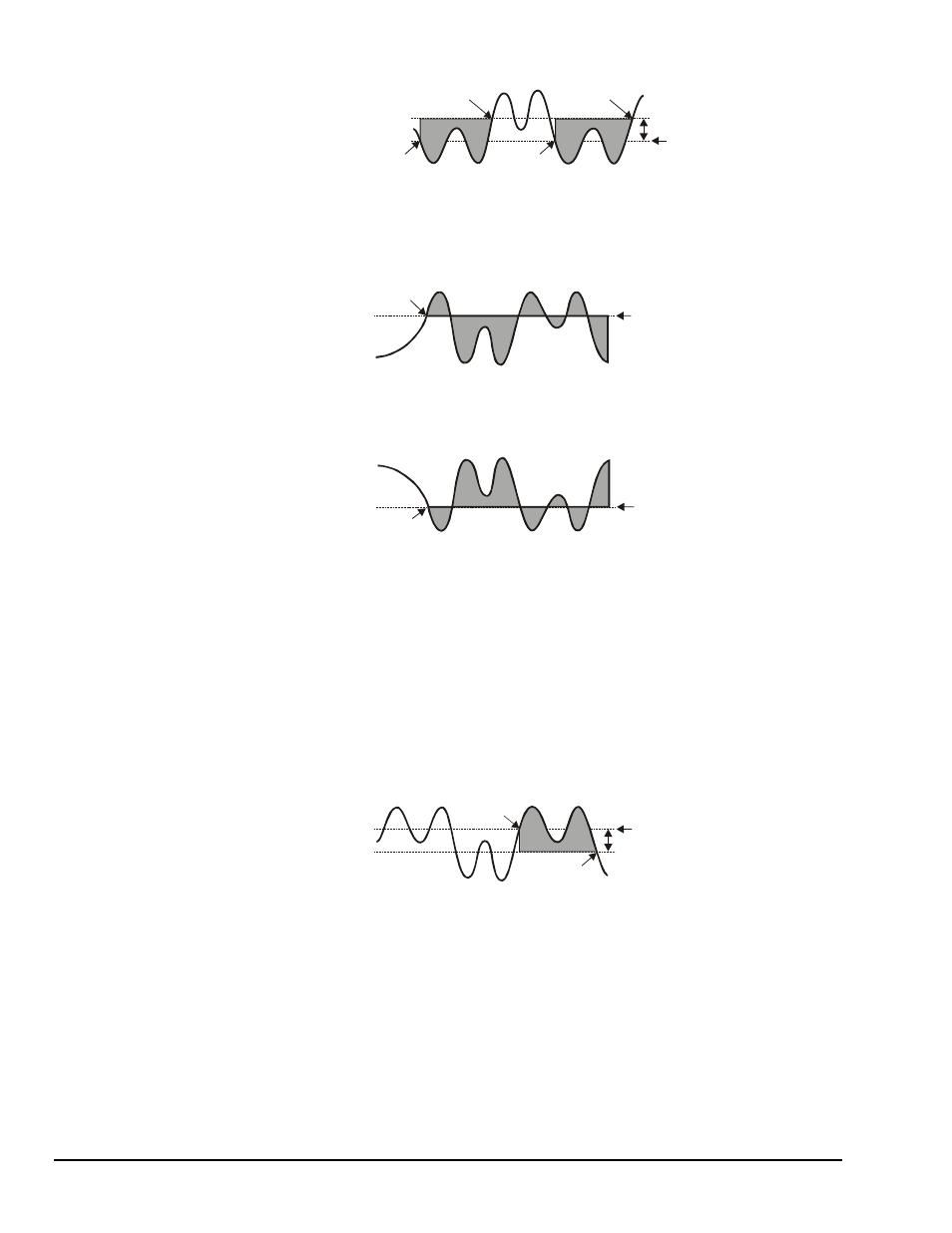Measurement Computing WaveBook rev.5.3 User Manual
Page 88

Below-Level Trigger
Falling slope
Instantaneous duration
Level initialization
Trigger Level
Hysteresis
No Trigger
No Trigger
Trigger
Trigger
This trigger is valid whenever the signal level is below the trigger level and stays valid until the signal level
goes above the hysteresis range (the reverse of above-level triggering). As with all multi-channel trigger
types, WaveBook's actual trigger depends on the combination of this trigger with the other channels'
trigger states.
Above-Level-With-Latch Trigger
Rising slope
Latched duration
Level initialization
Trigger
Trigger Level
In this trigger type, the channel becomes valid when the signal level rises above the trigger level and stays
valid until the acquisition is complete and WaveBook is re-armed.
Below-Level-With-Latch Trigger
Falling slope
Latched duration
Level initialization
Trigger
Trigger Level
The channel becomes valid when the signal level rises above the trigger level and stays valid until the
acquisition is complete and WaveBook is re-armed (the reverse of above-level-with-latch triggering).
Latched triggers are often used in multi-channel "AND" triggering, where WaveBook will not trigger until
all trigger channels are valid. After a latched trigger becomes valid, it stays valid (waiting for the other
triggers to become valid) until WaveBook is triggered and the acquisition completes. If the trigger is non-
latched instead of latched, the channel may not stay valid and WaveBook will not trigger until the channel
becomes valid again and all channels simultaneously reach their trigger levels. In other words, latched
triggering is used to trigger after something has occurred, but non-latched triggering is used only during
the simultaneous occurrence of desired signal levels. It is possible to combine different trigger types in a
single multi-channel trigger. For example, WaveBook could trigger when channel 3 is below 0.9 volts
after channel 2 has gone above -1.3 volts (by configuring channel 3 for below-level triggering and channel
2 for above-level-with-latch triggering).
Rising-Edge Trigger
Rising slope
Instantaneous duration
Edge initialization
Trigger Level
Hysteresis
Trigger
No
Trigger
This trigger becomes valid after the signal level has been below the hysteresis range and then goes above
the trigger level. This trigger becomes invalid when the signal level goes below the hysteresis range.
Unlike above-level triggering, the channel cannot become valid until the signal level first goes below the
hysteresis range. This prevents the false triggering that would occur if the signal were above the trigger
level at the start of the acquisition.
4-18 WaveBook Operation Reference
897895
WaveBook/512A, /516, /516A, /516E
